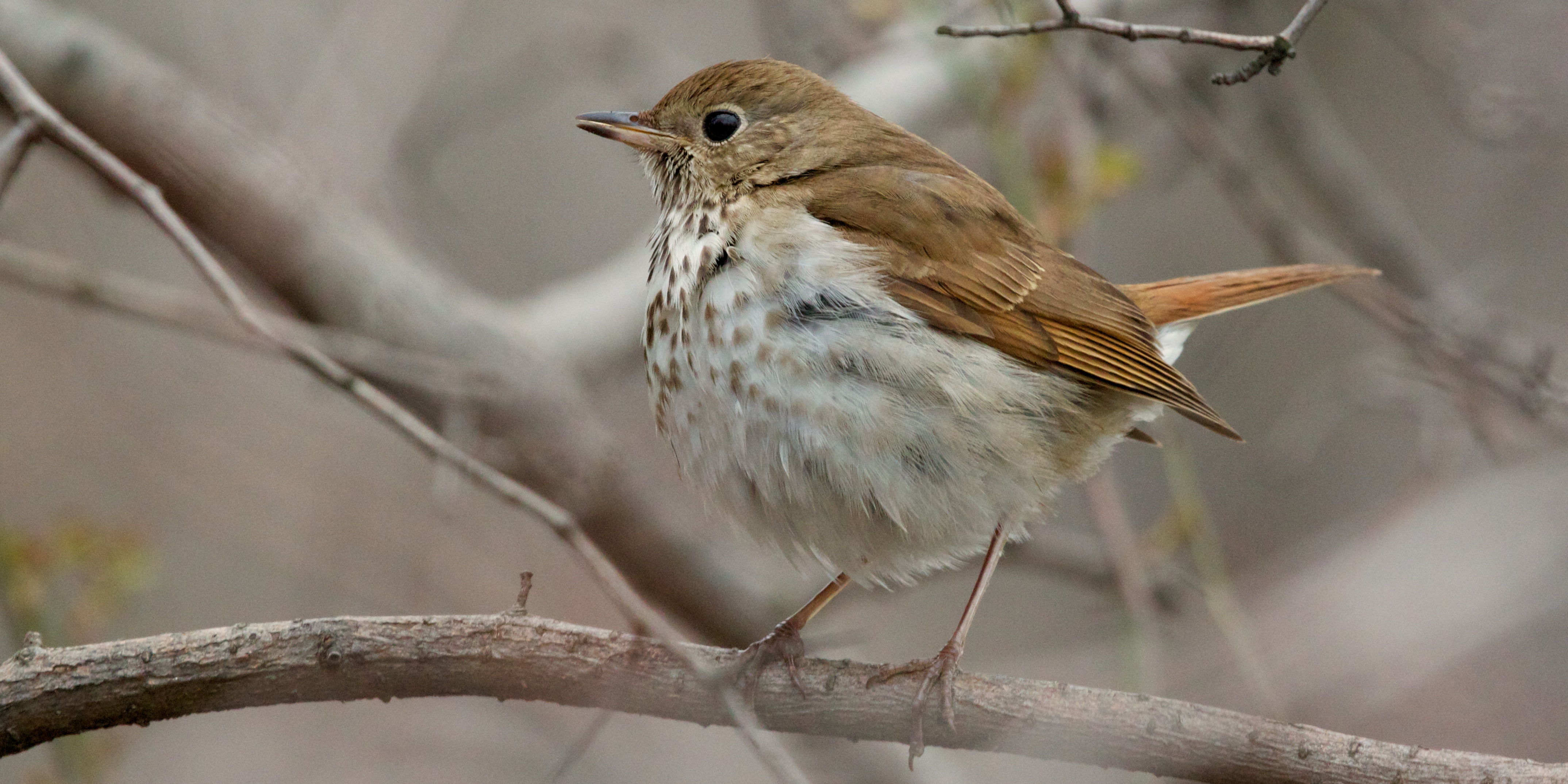
In summertime, the Sitka Summer Music Festival brings classical musicians from around the world to Southeast Alaska. But the warmer temperatures also bring another musical migration — that of the hermit thrush.
On one evening music and science converged in a concert featuring the talents of two species.
Nevada City, California-based ornithologist Allison Nelson runs a small nonprofit that bands and monitors birds in the Sierra Nevada Mountains.
Her specialty — the hermit thrush — is a major migratory songbirds of the Pacific Northwest.
It’s iconic song fills the forests of Southeast Alaska this time of year.
“To walk through the woods, when you’re surrounded by hermit thrushes and other similar species where they’re singing at dusk or dawn is just such an amazing, musical, incredibly moving experience.” Nelson said.
The charismatic hermit thrushes are a perfect introductory bird for birder newbies, Nelson said.
“So many people consider the hermit thrush their favorite bird song,” she said. “I think they can be a good tool to help people understand birds, what birds face, the conservation challenges.”
This is Nelson’s third summer in Sitka studying hermit thrushes.
She’s here this year for a month as a part of the Scientist in Residency Fellowship with Sitka Sound Science Center, banding and studying the bird that migrates to Southeast to breed.
Though the hermit thrush is abundant, Nelson said species similar to it are in sharp decline.
“The Smithsonian Migratory Bird Center estimates that cats kill about 1.7 to 3.4 billion birds a year in North America alone,” she says. “You say that number to people and they’re like ‘I didn’t even know there were that many birds on the planet.”
So she partnered with musicians here for the Sitka Summer Music Festival to spend an evening talking with Sitkans about the special bird, and introduce them to a rarely performed composition by American composer Amy Beach, inspired by the hermit thrush.
“The hermit thrush has this sort of long introductory note in their song, doooo, doodle-oodle loo,” Nelson said, doing a brief impression of the bird. “In some of the composition there was that pattern of the long introductory note followed by the flourish.”
With Susan Reed on piano and Louna Dekker Vargas on flute, an audience of about 30 in Stevenson Hall were transported by the ethereal tune.
But as Allison discovered a week ago, even the bird she knows so well can still surprise her and transport her — not with song, but with silence.
She was on Galankin Island looking for color-banded birds when she ran into a hermit thrush, who was particularly interested in the bird song she was playing.
“He stood straight, made himself look taller. He fluffed out his breast feathers so he looked twice as tall and twice as fluffy.”
He began to sing, in a surprising way.
“They will sing the normal song they would sing as any time, but almost as if they whisper it,” Nelson said. “It almost sounds like the bird is in your pocket, being muffled. I could see him right in front of me singing this little quiet song. And at some points he had his bill open. He was moving his chest like he was singing, but I couldn’t hear anything,” she said.
When something this exciting happens, Nelson is thankful for the opportunity to share it with other science-focused Sitkans like naturalists Richard Nelson and Matt Goff,and University of Alaska Southeast biology teacher Kitty Labounty, and compare notes.
“We go on and on, like why did this bird do this? I wonder if the birds on the other island are doing this? Why are they responding to this call and not that call. You get together with folks like this and ponder these questions and answers,” Nelson said, laughing. “We love to try to solve all the world’s mysteries … over coffee cake.”
Through song or study, over cake or quietly listening to chamber music, in Sitka it’s not always clear where the science ends and the art begins.
